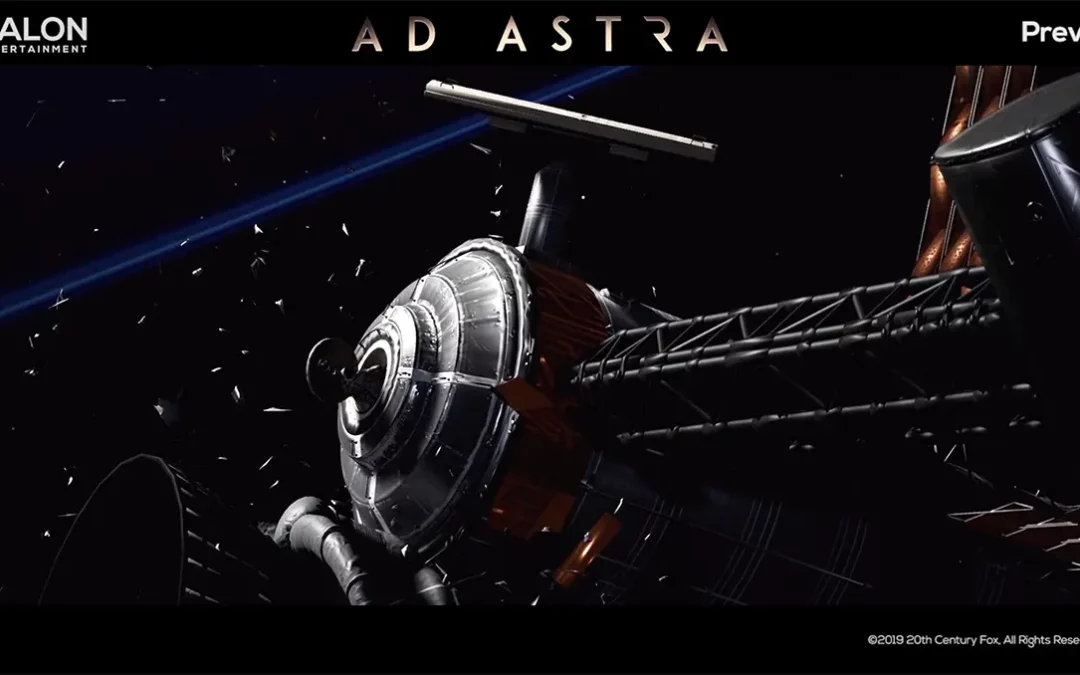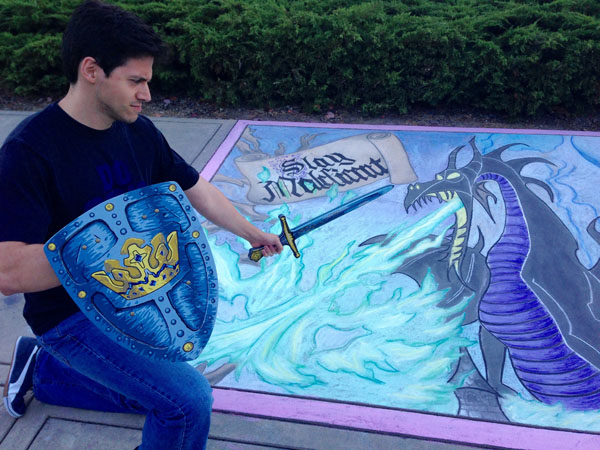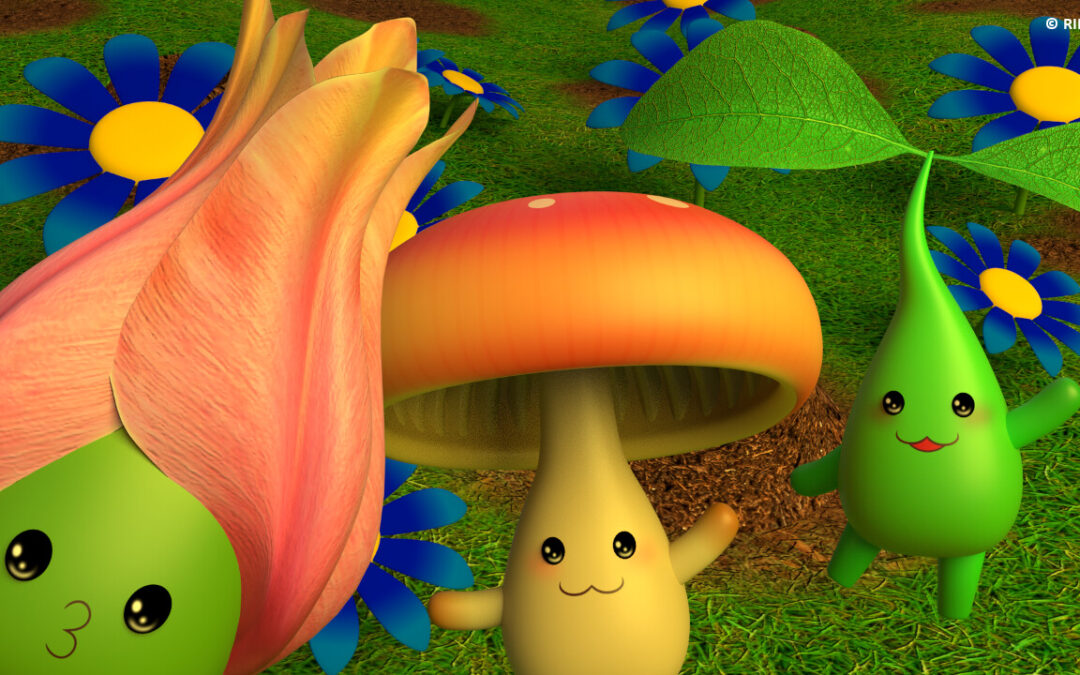The VFX Are Everywhere blog series continues today with Patrick Ferguson, Lead Compositor at Method Studios in Los Angeles. VFX Curriculum Director Ben Fischler chats with Patrick about Method’s work on Super Bowl ads, their workflow, and what they look for in artists.
Enjoy.
— The Animation Mentor Crew
Ben: Our series is titled “VFX Are Everywhere.” Visual effects are prevalent all around us. Quite often, audiences will watch something and not even be aware that they’re watching visual effects. What are projects that you’ve worked on at Method that most people wouldn’t even think include visual effects work?
Patrick: Sky replacement is pretty prevalent throughout. I would say over 50 percent of the skies always need to be swapped out. And sometimes, not even swapped out — maybe enhanced here, put a cloud here, put a little interest there. That happens all the time.
We also do a lot of foliage enhancements like trees — a lot of sweeping of trees, adding more foliage where there’s dead grass and just fixing landscapes that don’t look beautiful. There’s a lot of work that goes into matte painting. We did a show — DirecTV Troll — which is playing during the NBA Playoffs now. Many scenes had to be matte painted to make sure that they looked like idyllic settings, with greenery and trees specifically positioned.
… We did a spot for Verizon about a year ago called Payload. It was shot in San Francisco and it was an armored car heist sort of theme. There was a lot of enhancement of the city. There’s always signage enhancement or signage removal. A lot of that stuff — I would say over 50 percent of that stuff shot in cities — always has to be augmented also. That’s VFX that you never see, whether it be adding specific signage or getting rid of specific signage.
Ben: With compositing now, is every job in the comp department a two-and-a-half D or 3D job? Are the days of traditional comping in 2D over?
Patrick: Well, it still depends on the job. Pretty much, if there’s budget for it, every shot will be tracked in 3D. Once you have that camera information, yes, we use all that stuff to create a virtual layout so that the compers can place cards wherever they need to, have tracking locators, and do whatever they need to do in 3D space basically. There’s still some shows where it’s not as necessary — there you can track in stuff in 2D. We use Mocha Pro a lot, which is a planer tracker, which is sort of a two-and-a-half D sort of thing. But yes, if it requires it, it will go through the Integration Department (tracking and match moves) and we’ll get a real 3D camera for it — and that just opens up the flood gates on what we can do, what we can place, and how we can augment the environment.
Ben: Is the Integration Department considered part of the comp team or a separate department that’s clearly delineated?
Patrick: At Method, it’s a clearly delineated department that has its own Integration Supervisor who runs that department, and they have a staff that ramps up and ramps down depending on shows. They have a very specific task of tracking the scenes, match moving whatever needs to be match moved, creating layout geometry that is a low-res poly so that we can bring it in. They are their own department.
Ben: Tell me about the role of Lead Compositor, both specifically to the Kia Space Babies spot and the general roles and responsibilities, and how that varies from show to show or in different studios. What does it mean to be the Lead Compositor?
Patrick: For Space Babies and most large Super Bowl-esque commercials we do, the Lead Compositor works with the VFX Supervisor and the client director to set the look of each sequence. So for Space Babies, the tricky part was trying to figure out what the look of the baby planet was. So you’ll work with the director and the advertising agency and with matte painters to sort of come up with what the style look is. Once the look has been established for each one of these sequences, whether it be the baby planet or the space sequence, then the Lead Compositor doles out all the shot plates and all the stuff that was shot as elements to the individual compositor. I think for Space Babies, we had seven different compositors — both Flame and NUKE — on the show. And then as the show progresses, we’ll have daily updates and daily walk-throughs to make sure that each compositor is getting all the elements and continually improving all the comps as they go along.
At Method, the compositing supervisor also works on shots. So I had three or four shots that I was working on, as well as supervising all the other comp artists. And then, the compositing supervisors are also involved in all the reviews with the director and agency. I put the whole edit together. I work with the editorial to make sure that any changes on my end get relayed back to editorial. Many times, on huge spots, you come up with what you think the director and agency think is an edit — but it’s somewhat rough because there is so much that’s not in there, because we’ve only gotten so far with our animation previews and all that sort of stuff. So once all that comes in, it definitely influences how the cut is shaped. For example, maybe the elephant walks slower or the rocket ship shot needs to have more play on it just because it’s so beautiful. I’ll work with the director and the agency to figure out what the flow of this new idea and edit is.
And for the NUKE artists, since I know NUKE, I’ll set up the templates so that all the shots look similar, all the shots coming from CG have a similar breakout — so all the NUKE artists can get working in the same realm. I’ll try to do the same thing for the Flame artists and have templates for them also, so that they are looking through the same sort of filter and scope to unify the project between Flame artists and NUKE artists, and to maintain continuity.
It’s a lot of daily upkeep, making sure that the compositors are continuing along with their shot. Then I’ll pull every shot in every day and we’ll have daily reviews.
Ben: One of the things we’re trying to teach is overlap. That’s to say that to be strong in lighting or comp, it’s good to have experience in both areas. For example, as a comper, it’s behooves you to have an understanding of lighting and rendering so that you can work with a separate lighting team or if necessary, you can light your own shot and vice versa. Everything is connected. In your setup, lighting and comp are separate departments. Is there any crossover, where you may have lighters comping their own shots or vice versa?
Patrick: We definitely encourage that here at Method. We have educational seminars on a weekly or biweekly basis, where each department informs all the other departments on how they are doing things and how certain problems have been tackled and stuff like that. I definitely agree that you need the knowledge base of each department to make your specialty shine.
At Method, all the compositors are primarily compositors — they don’t light their own shots. The lighters are primarily lighters.
There’s information flowing from both departments. And there is knowledge of each other. But predominately, in most of the places that I’ve worked — the lighters light shots and the compositors composite shots.
Ben: You said that you’re a NUKE and Flame shop?
Patrick: We have a whole Finishing Department here — which is mostly Flame, which is mostly the hourly jobs. Then we have a whole Flame Department that is VFX Flame, and that’s the long-form scheduled commercials. We also have a NUKE Department for both commercials and features. There’s a lot of cross-pollination of artists between those three groups.
Ben: Any propriety tools to help you move cohesively?
Patrick: We have a few tools that just make things easier. We have a LUT (Look Up Table) publisher that publishes a LUT that comes in so that it is seamlessly viewable in NUKE, Flame, RV, FrameCycler, or Houdini. That’s a nice tool that we have.
Ben: Last time I used Flame, it still struggled with EXRs.
Patrick: It has gotten better. You can’t arrow up like you can in NUKE. But you can bring in EXRs, all the different layers, AOVs, and pull them out. Flame is keeping up with the curve as far as compositing large-scale CG environments.
Ben: What renderers do you typically use in production?
Patrick: It depends on the show. We have a huge V-Ray Department here. All of our hard surface stuff is done in V-Ray. Our fur pipeline is through Houdini/Mantra.
Ben: When you’re thinking about skills for artists that are coming into your team, what are some of the important qualities and skills that you really look for?
Patrick: The biggest thing is to learn how to craft your eye. You have to be able to see something, know what it should look like, and strive toward that. Sometimes, I get a lot of compers who just start versioning supervisors to death — and that’s just not the way to go. You really have to work on figuring out what the supervisor is looking for and strive to go toward that — and personally, you should do that before showing something on a repeated basis.
Ben: Don’t show if it’s not ready to show.
Patrick: Exactly right. I think a lot of young compositors come in and do the note and that’s it, and then kick it back for review. But then this ends up becoming spiraling, unending versions of not looking great. So young compositors definitely need to figure out what their eye is, and that’s something that happens over time. But they need to figure out what the comp supervisor is looking for and just see it in their minds and then strive toward that. And really know that before they’ll be happy with it, you have to be happy with your own work. You should be happy with your work before you move it up the chain.
Ben: One of the things we’re trying to emphasize in our program is the importance of photography as the bedrock essential tool for developing your eye. I used to feel that was more important from a compositing standpoint — but now with the current generation of renderers like V-Ray and Arnold, photography applies to lighting and rendering in the same line as compositing. Now, to be a lighter, you need the same eye of a photographer essentially. And that’s a life-long skill. In our program, you are required to shoot X number of shots every week with different goals in mind. It quickly becomes apparent to students how valuable that is, as well as developing a reference library.
Patrick: Just seeing everything in your environment and taking a snapshot of it and seeing how real things interact with real things — that’s lighting and compositing in a nutshell. Then there’s composition, also. Sometimes, we have to come up with an effect, design, or something like that — and having that photography background is essential for that sort of stuff. Knowing how design works, what looks good, what sides and pieces of the frame are important — I agree, a photography background is almost essential for lighters and compositors.



